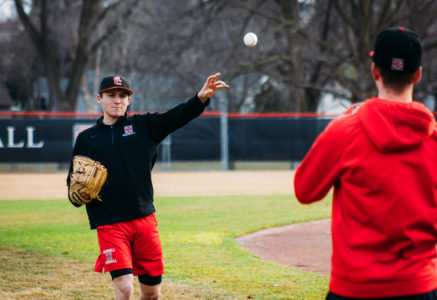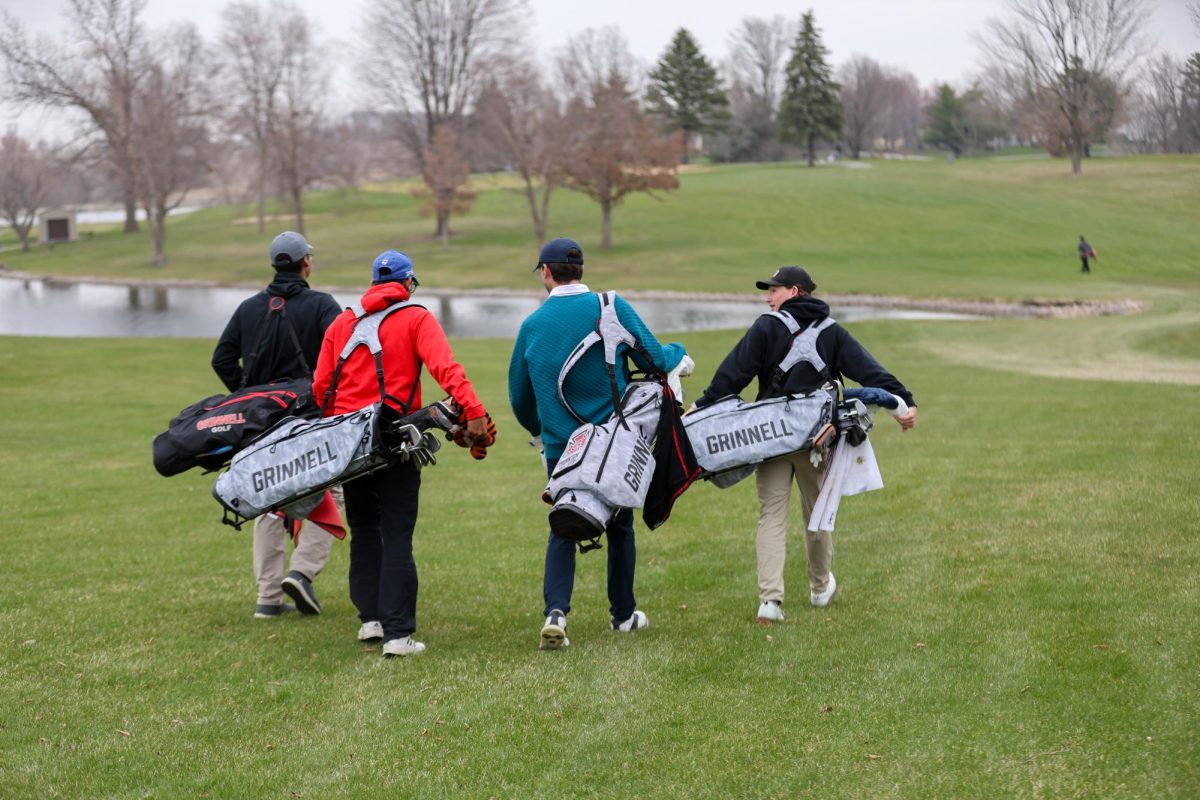
“In my 20 years here, we have never canceled as many games as we have this year,” Head Baseball Coach Tim Hollibaugh told me as we walked from his office to Pioneer Park, where the team hosts its practices and games.
Recent weather has interfered with Pioneer baseball’s practices ever since spring break, leaving them to practice in the fieldhouse. The team’s outdoor practice that I got the chance to visit was only the third of the season. Fortunately for them (and me), it was a perfect afternoon for baseball.
Normally, the baseball team has six practices a week, with four individual group workout days and two team workout days, which are usually Sunday and Thursday. For group workout days like today, players are assigned to groups based on their positions: catchers, pitchers, outfielders or infielders. Each group works on their skill set with a pre-assigned assistant coach. Still, given the number of players, organizing practice seems an impossible task. Hollibaugh, however, has developed a clever system.
“What I do is I plan out week by week,” Hollibaugh said, drawing my attention to his Excel spreadsheets. “Then I e-mail the practice plans to guys before noon every day so they know where we are, what we’re doing and what they’re going to focus on. That allows guys to come in and be productive.”
When practice time comes each group arrives fifteen minutes after the previous one and starts its exercises. Hollibaugh’s system is like clockwork. As the catchers practice throwing the ball around, the infielders sharpen their offensive skills in the batting cages. At the same time, the next group of outfielders is stretching, waiting for their turn at the cages.
“Realistically, every group doesn’t have more than 45 minutes to [practice]. Splitting them up takes advantage of the facility we’ve got and the time that they have, so that they can get the number of reps they need in the shortest period of time.”
The pitchers, with whom Hollibaugh works personally, follow a different regimen. Most college pitchers are specialized, meaning they do not have to bat or play other positions. After a couple of “arm care” exercises to strengthen their shoulders, the pitchers got into pairs and started throwing to one another. The drill is essentially the same as that of normal groups, but the throws have more variety.
“Position players are working on just their general throws from their position. But for pitchers, if you see guys kneeling down in a particular pitch it means that they are working on different spin rate, creating different ways to pitch to keep it in the strike zone,” Hollibaugh said.
While everything was happening, Hollibaugh made sure to check in with his pitchers to see how their arms are doing. He didn’t forget to point out what they’re doing well, as well as room for improvement. He also asked personal questions, checking up on their day-to-day lives.
For Hollibaugh, a practice can be lighthearted as long as it’s also productive. For example, at the end of practice players are given the option of doing “basketball conditioning,” where they get to play basketball instead of doing sprints. The enthusiasm from players and coaches alike was on display throughout every drill.
As Pioneer baseball reaches its important stretch against Midwest Conference teams, the unpredictable weather conditions have made the team’s situation more difficult, with weekday games to make up for it.
One thing is clear, though: temperatures might be low, but spirits are not.























































